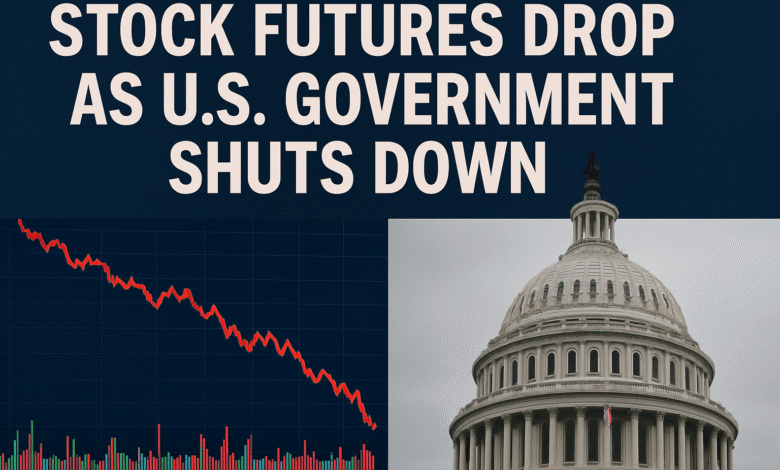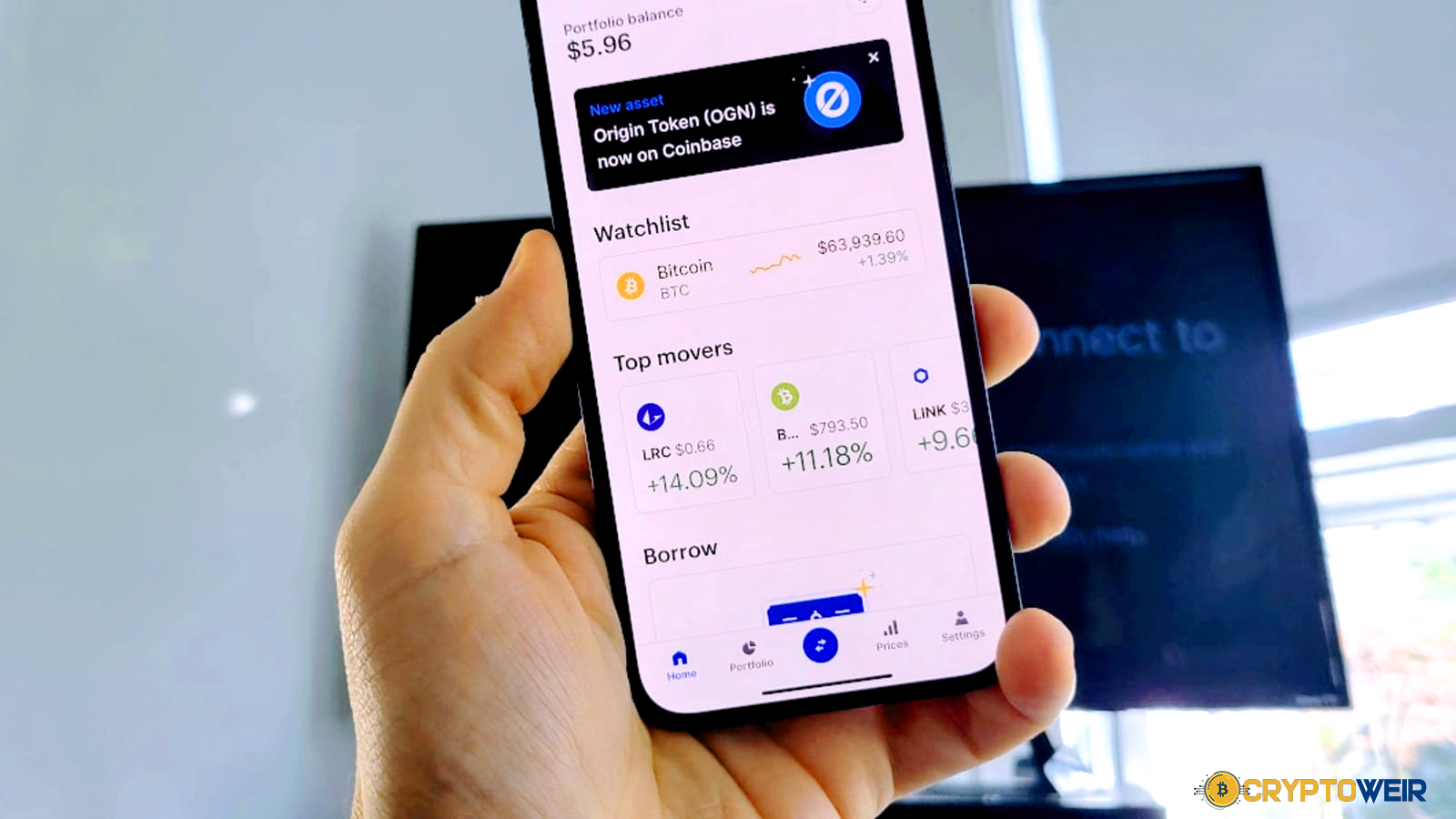Stock Futures Drop As US Government Shuts Down
Stock futures fall as a U.S. government shutdown begins. Here’s what it means for markets, data releases, the Fed, and your portfolio—live context and outlook.

U.S. Stock futures drop lower this morning as Washington crosses a consequential threshold: a federal government shutdown has begun after lawmakers failed to pass a stopgap funding measure. The immediate market reaction is risk-off—Dow futures, S&P 500 futures, and Nasdaq futures slipped in premarket trading—while classic havens like gold surged to fresh records. Beyond the headlines, investors are quickly recalibrating around two near-term realities: several critical economic data releases may be delayed, and the Federal Reserve’s path grows cloudier as policymakers lose some of their most important indicators.
In this live-style analysis, we’ll unpack how shutdown dynamics intersect with equity futures, rates, the dollar, commodities, and sector leadership. We’ll also revisit what history tells us about market performance during past shutdowns, explain the likely calendar disruptions (from the nonfarm payrolls report to CPI), and outline practical strategies for navigating volatility without overreacting. The aim is to create a balanced, human-written guide that combines the latest developments with enduring context—so you can follow the story and understand the implications for your portfolio.
Where markets stand right now
Futures dip as safe-haven bid intensifies
As trading screens lit up, S&P 500 and Nasdaq 100 futures were modestly in the red—reflecting caution rather than panic—while gold broke to an all-time high above $3,875/oz on a strong flight-to-quality impulse. The dollar edged lower, and Treasury yields were mixed as traders weighed the risks of growth against the possibility of earlier-than-expected rate cuts if the data outlook deteriorates.
The immediate driver is straightforward: a federal closure interrupts parts of the economy and threatens to delay key statistics, compounding uncertainty at a time when investors are already parsing inflation, employment, and earnings reports. Markets dislike uncertainty, and the risk premium rises accordingly—first evident in equity futures and volatility measures, and then in cross-asset flows into perceived havens, such as the billion.
Live coverage focus: data calendar in flux
A pivotal wrinkle is the data void. The Bureau of Labor Statistics has indicated that it won’t release reports during a shutdown; that means September’s jobs report (nonfarm payrolls) and potentially the consumer price index could be delayed. With the Fed’s October decision window approaching, less data will result in wider forecast bands and heightened sensitivity to any private-sector proxies. That’s one reason premarket risk tone has tended to.
How a government shutdown hits markets
The near-term channel: confidence and cash flows
A shutdown chiefly affects non-essential operations, which can slow approvals, contracts, and certain services. This tends to weigh on sentiment among consumers and businesses, dampening risk appetite in the stock market. While the direct GDP hit of short shutdowns is typically modest, the confidence channel is powerful: when headlines scream dysfunction, managers pause projects and households delay big-ticket purchases in markets, which shows up as lower stock futures, wider credit spreads, and a tilt toward defensive sectors.
The data channel: the Fed flying with fewer instruments
Markets also move because the Fed may have to steer with fewer instruments. If major government data series go dark, investors must lean on alternative signals (ADP payrolls, private surveys, and high-frequency indicators). Pricing for rate moves can shift quickly in that vacuum—today, rate-cut odds rose as traders extrapolated softer growth and a cautious Fed reaction function. That mechanical repricing supports long-duration assets, such as growth stocks, on a relative basis, but can also cause whipsawing intraday as incoming private data surges.
The Historical Lens: Sell the Rumor, Buy the Reopening?
History suggests shutdowns rarely cause deep, lasting equity drawdowns. Research collated ahead of prior episodes shows median on-shutdown declines are typically slight—on the order of a couple of percentage points—while post-shutdown rebounds can be robust, particularly when closures extend beyond the days. Investors often “look through” the noise once a funding deal emerges, refocusing on earnings and the macro trajectory. None of this guarantees outcomes today, but it anchors expectations.
What’s different this time
Magnitude of the safe-haven response
Today’s session stands out for the magnitude of the gold bid, with spot prices setting new records as the shutdown begins. A weaker dollar and rising odds of policy easing amplify the appeal of bullion, especially when real yields appear to be capped and data visibility is impaired. This outsized move underscores how quickly asset-allocation hedges can be repriced when Washington risk collides with cyclical uncertainty.
Data blackout risk in a Fed decision window
The second differentiator is iming. With the jobs report and CPI potentially delayed, the Fed’s communications challenge grows. In the absence of official data, market-based indicators (breakevens, term premiums, financial conditions indexes) carry extra weight, and corporate guidance during earnings season becomes even more critical as a real-time macro signal. That dynamic can deepen intraday volatility, particularly around private releases like ADP and ISM.
Sector-by-sector implications
Financials and cyclicals: sensitivity to growth and liquidity

Banks and cyclicals tend to track growth expectations and credit conditions. If a shutdown dents business confidence or crimps deals tied to federal approvals, you can see relative underperformance for capital-goods makers and select industries. On the other hand, a drop in yields tied to higher cut odds can support rate-sensitive corners of the financial sector and interest-rate-exposed segments of the real estate sector. Ultimately, positioning and time horizon matter more than a blank rule.
Technology and long-duration growth
If the market leans toward earlier Fed easing due to softer activity and fewer data prints, long-duration growth can catch a bid—particularly profitable me caps. However, fragility in risk sentiment can still push Nasdaq futures lower at the start of the session. Investors should distinguish between valuation-supported compounders and speculative, cash-burning names that remain vulnerable when liquidity tightens.
Energy and commodities
Shutdowns don’t directly alter global oil supply/demand, but risk-off sentiment often translates into short-term oil dips unless geopolitical or OPEC+ headlines counterbalance. In today’s mix, crude is fluctuating while gold decisively rallies, and silver has tracked higher as well—both reflecting the broader safe-haven bid and a softer dollar. Commodity-linked equities can diverge significantly from the underlying asset, allowing us to be aware of correlation and slippage.
The economic calendar: what may slip
Payrolls, CPI, and more
If the shutdown lingers, BLS and other agencies will suspend releases, meaning investors could miss the September nonfarm payrolls report and possibly the mid-October CPI until funding resumes. Data gaps complicate corporate planning and elevate the role of private providers. The market impact is less about a single report and more about serial uncertainty—when the calendar goes dark, every substitute signal carries a more significant impact.
Market microstructure under thinner information

With fewer “official” catalysts, liquidity can thin around the edges. That often means larger bid-ask spreads in single names around headlines, more mechanical futures-led moves, and bigger reactions to company-specific updates that double as macro proxies (e.g., large retailers on consumer health, freight firms on trade flows). Staying mindful of the information set can keep short-term trades disciplined.
Fed policy: what the market is pricing
The cuts vs. caution trade-off
Futures are shading toward higher odds of a rate cut in October, hinging on a mix of weaker labor signals and the shutdown’s growth hit. That said, the Fed has historically tried to look through transient fiscal showdowns and focus on its mandate. A prolonged closure that delays data and amplifies uncertainty may argue for a more cautious tone, rather than aggressive easing—unless private indicators deteriorate materially.
Communication challenges in a data desert
Expect policy communication to emphasize flexibility and data dependency, while acknowledging the measurement problem a shutdown creates. Read-throughs from regional Fed surveys and financial conditions metrics may appear more frequently in speeches and minutes while the official calendar is paused. That keeps rate volatility elevated around even second-tier inputs.
Global spillovers: Asia and Europe react
Overnight, the tone was mixed: Japan’s Nikkei dipped, while parts of South Korea and Taiwan advanced on idiosyncratic tech and e-commerce themes. Europe often treats U.S. shutdowns as episodic rather than systemic. Still, weakness in Wall Street futures and a softer dollar tend to bleed into opening prints and sector rotations, notably in banks and industrials. Global spillovers today are most visible through FX and commodities, with gold’s surge setting the pace.
Strategy: how to navigate a shutdown tape
Keep perspective on historical playbooks
Past closures suggest tw guideposts. First, drawdowns during shutdowns are usually modest. Second, markets often recover after funding is restored, especially following longer standoffs, as pent-up activity normalizes and uncertainty fades. That doesn’t mean sit still, but it does argue against over-optimization and headline-chasing trades that can whipsaw portfolios.
Focus on liquidity, sizing, and time horizons.
In thinner information environments, position sizing and liquidity discipline are more important. If you’re adding exposure, favor high-quality balance sheets and businesses with pricing power. If you’re hedging, be aware of the cost and basis risk: options pricing can fluctuate with realized volatility, and index hedges may not perfectly align with sector or sector tilts. Above all, align any moves with your time horizon—shutdowns are political events with uncertain timelines but have historically had limited long-term market impact.
Diversification and hedges
Some investors introduce or increase diversifiers when Washington risk rises, such as gold, Treasuries at select maturities, or minimum-volatility equity sleeves. Today’s action shows why—gold’s surge offset equity softness for portfolios that hold it as a strategic or tactical hedge. However, remember that correlations shift, and no hedge is perfect; sizing and scenario testing are just as necessary as the instrument itself.
What to watch next
Duration of the shutdown
The length of the closure is the most critical variable. A brief episode may barely dent Q4 activity and corporate earnings, while a prolonged standoff risks more profound furlough effects, delayed contracting, and wider confidence damage. Markets will parse every congressional headline for signs of a stopgap continuing resolution or a broader funding compromise.
The data workaround
In the absence of BLS and other agency releases, traders will rely on private-sector proxies (such as ADP, PMI/ISM, and job-posting data) and company guidance. Expect sharper reactions to those prints than usual and a premium on forward-looking commentary from management teams as earnings season ramps.
Cross-asset confirmation
Watch whether the dollar’s slide persists, whether real yields drift lower, and whether credit spreads widen aningly. A “classic” risk-off would typically show lower futures, stronger gold, a softer dollar, and tighter financial conditions—today’s opening fits much of that script. How these indicators evolve together will tell you whether the move remains orderly or accelerates.
Final Thoughts
Stock futures are lower as the U.S. government shuts down, with the market leaning cautiously while safe-haven demand lifts gold to record highs. The most significant practical impact is the potential data blackout, which could delay payrolls and CPI, challenging the Fed and injecting additional uncertainty into rate expectations. History argues for perspective—shutdowns rarely leave lasting scars on equities and rebounds often follow—yet positioning and patience are key while the tape navigates politics. Stay focused on liquidity, risk sizing, and time horizons; let the narrative unfold, and avoid overreacting to every twist that appears on your screen.
FAQs
Q: Why do stock futures typically fall when a government shutdown begins?
Because shutdowns raise policy uncertainty and can delay key economic data, investors demand a higher stock premium. That is first evident in equity futures and safe-haven flows, particularly in gold and, at times, Treasuries.
Q: Will the Fed cut rates because of the shutdown?
Not automatically. The Fed focuses on its mandate, but a data blackout and softer growth signals can nudge rate-cut odds higher if private indicators weaken. Communication typically emphasizes flexibility and data-driven approaches.
Q: Which reports might be delayed?
If the closure persists, the nonfarm payrolls report and possibly CPI could be postponed, along with other agency applications. That increases reliance on private data and corporate guidance.
Q: Do shutdowns cause lasting bear markets?
Historically, no. Median market declines during shutdowns are relatively small, and equities often recover once funding resumes, especially after more extensive closures. The past isn’t prologue, but it serves as a helpful baseline.
Q: What’s the most innovative portfolio move today?
Avoid knee-jerk er-trading. Revisit liquidity needs, stress-test allocations, and consider diversifiers in sizes that fit your plan. Keep the focus on quality, durable cash flows, and time horizons rather than hourly headlines.
See More: 10 Ultimate Ethereum Mistakes Costing Investors Millions









